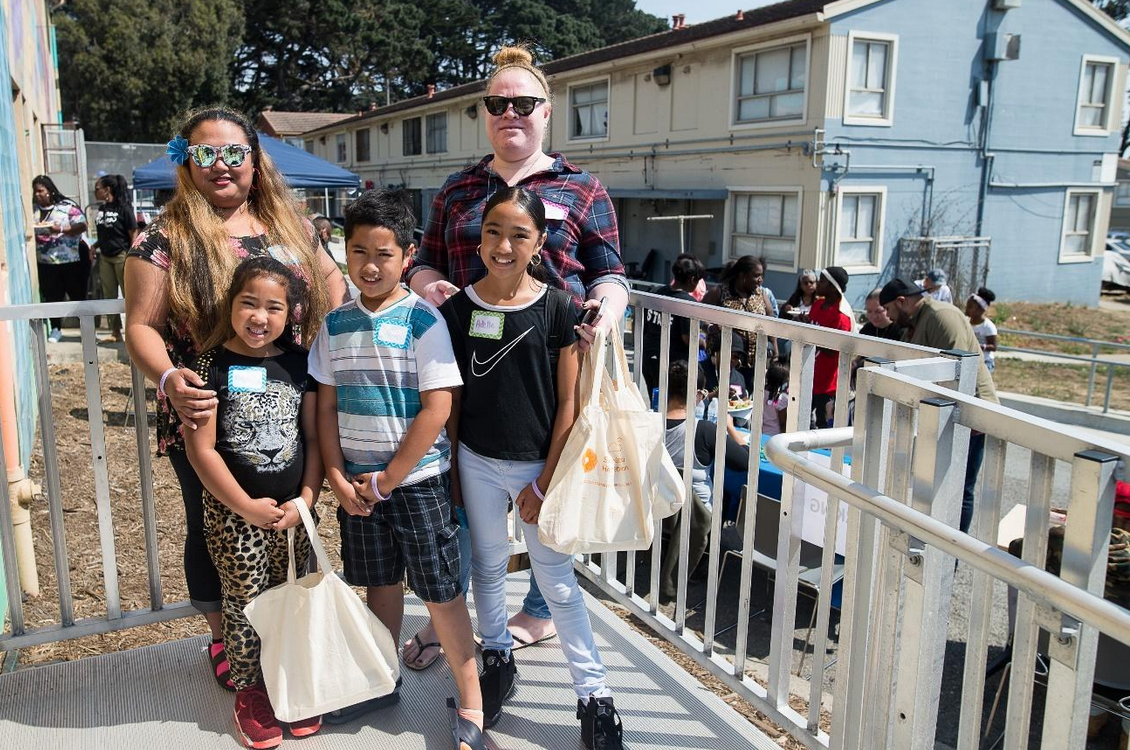Five Take-Aways on Breaking the Cycle of Poverty

Photo Credit: Halona Photography/Rhea Bailey
by Ellie Rossiter:
In a city as prosperous as San Francisco, residents living in HOPE SF public housing in the city’s southeast neighborhoods have lived in poverty for many generations. Families living in HOPE SF earn less than $14,000 per year; 53% of students are chronically absent from school; most adults have not gone beyond high school; and 90% of young people, ages 18-24, are unemployed.
It is absolutely true that breaking the cycle of poverty requires institutional and systemic change, but equally important is understanding and addressing personal experiences and individual transformations that have to occur for people to move from poverty to economic independence.
A few weeks ago, I attended the Disrupting Poverty Conference in Boston, hosted by the Crittenton Women’s Union. Here are five take-aways from the conference that we can apply to our work helping transform San Francisco’s HOPE SF communities and other impoverished communities:
1. Poverty is more complicated than it used to be. It is no longer possible to support a family with a high school diploma, a resume and a reference. Today, the gap to get from poverty to self-sufficiency is bigger than ever, requiring an income that is 3 1/2 times the federal poverty level. Added to that, entry-level jobs are paying less than before, and more education is required to attain higher earning jobs. Getting out of poverty requires education beyond a high school degree, a job that pays a living wage, a supportive peer or family network, and enough assets to have a cushion to fall back on.
2. Poverty is “sticky”. Children who grow up in the bottom fifth of national family income are more likely to remain in poverty as adults. Getting out of poverty doesn’t happen in a vacuum, and it’s not a “one size fits all approach.” Breaking poverty cycles takes time, persistence, dogged engagement, and relentless outreach. Moving from poverty to self sufficiency is a non-linear process — it will never fit into a logic model or a flow chart. It has to occur in the context of everything going on in our lives — safe and stable housing, individual and family well-being, higher education, competitive job skills, financial capability, and a strong network of support to rely on.
3. We must create pathways out of poverty that support and prepare individuals for high-demand, high stress jobs. We are still addressing poverty with the same programs that were developed in the 1960s, but holding a job in today’s environment means a person needs to be able to multi-task, manage multiple priorities, and make many high-stakes choices throughout the day. It is virtually impossible for a family to get ahead in any one critical area if other areas are unstable. A low-income person cannot successfully attend school if she is homeless or depressed or her children have physical or mental health problems. Furthermore, consequences for making the wrong decision are catastrophic when there are no financial and emotional buffers to fall back on. For example, parents sometimes have difficult decisions like do they stay home with their sick child and put their job at risk.
4. Brain science can assist in finding the solution. Poverty challenges the ability of our brains to have “executive function.” What is executive function? Think Thanksgiving Dinner, where everything has to come together at the last minute: whipping the mashed potatoes, carving the bird, and making the gravy. The executive function capabilities allow us to multi-task, organize a set of steps, control our inhibitions, and keep the goal in mind, even under pressure. Under extreme and pervasive emotional stress, resulting from living in poverty and in violent communities, executive functions are compromised, and impulses are extremely difficult to control. It’s harder to calm down; dealing with authority feels threatening; maintaining confidence is challenging; and being resilient to make myriad decision necessary to hold jobs and keep families together feels impossible. The good news is that research shows that even as adults, the brain’s plasticity makes it possible to build the executive function muscle. One-on-one mentoring and coaching help people build the “brain muscles” required to solve complex problems and set goals necessary to successfully manage their lives.
5. Having a peer network and a supportive community is essential. It is a natural human tendency and a basic need to seek out and rely on community. However, many individuals living in poverty feel isolated from a sense of community because they lack trust and social cohesion. Engaging with peers through productive and supportive community-led activities, such as social events, learning circles, support groups, and healthy activities, promotes healthy living, provides emotional support, builds trust, creates social cohesion, builds leaders, and encourages positive engagement in the community. Communities support individuals to stay on track with their goals, which is necessary component of moving out of poverty and achieving self-sufficiency.

